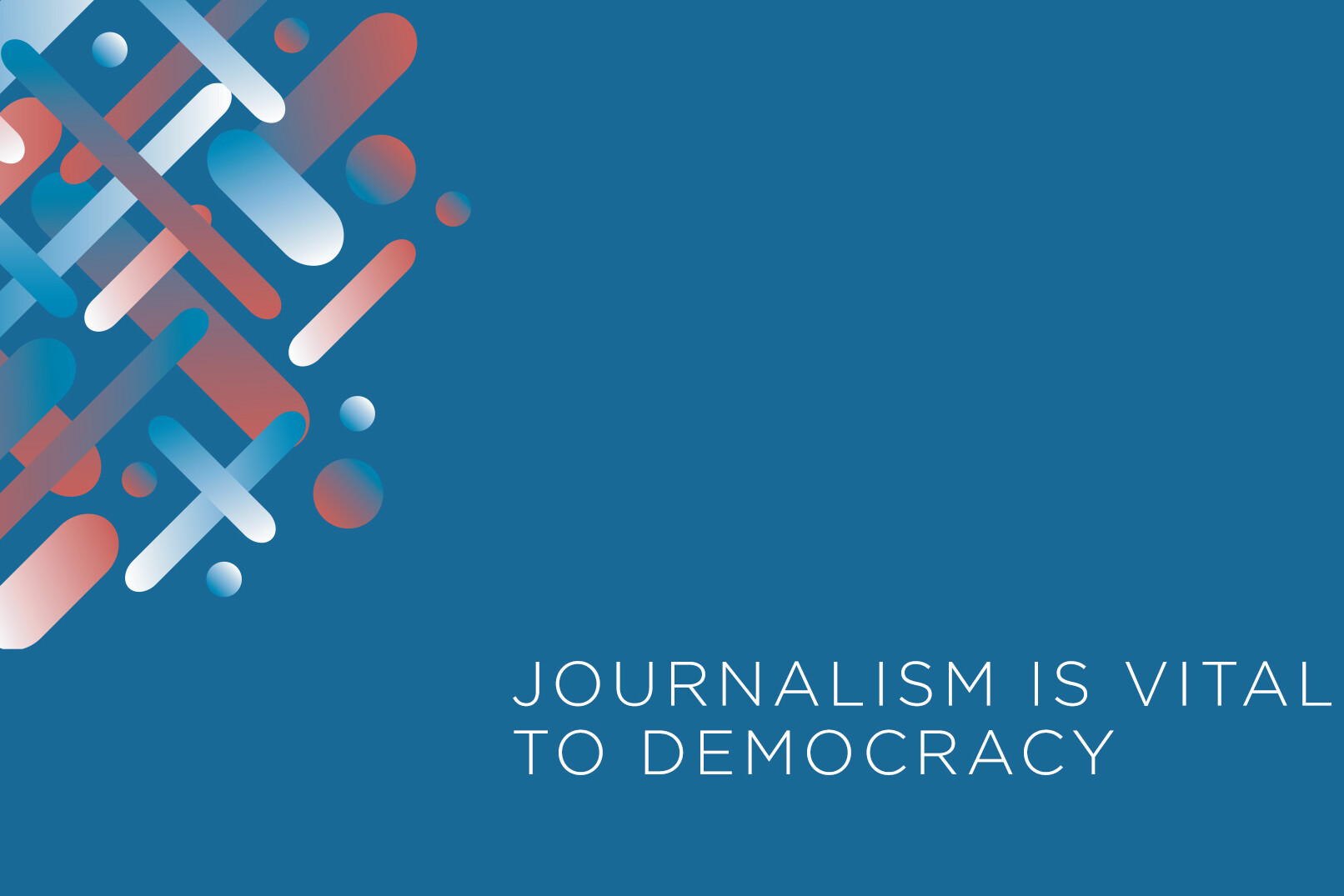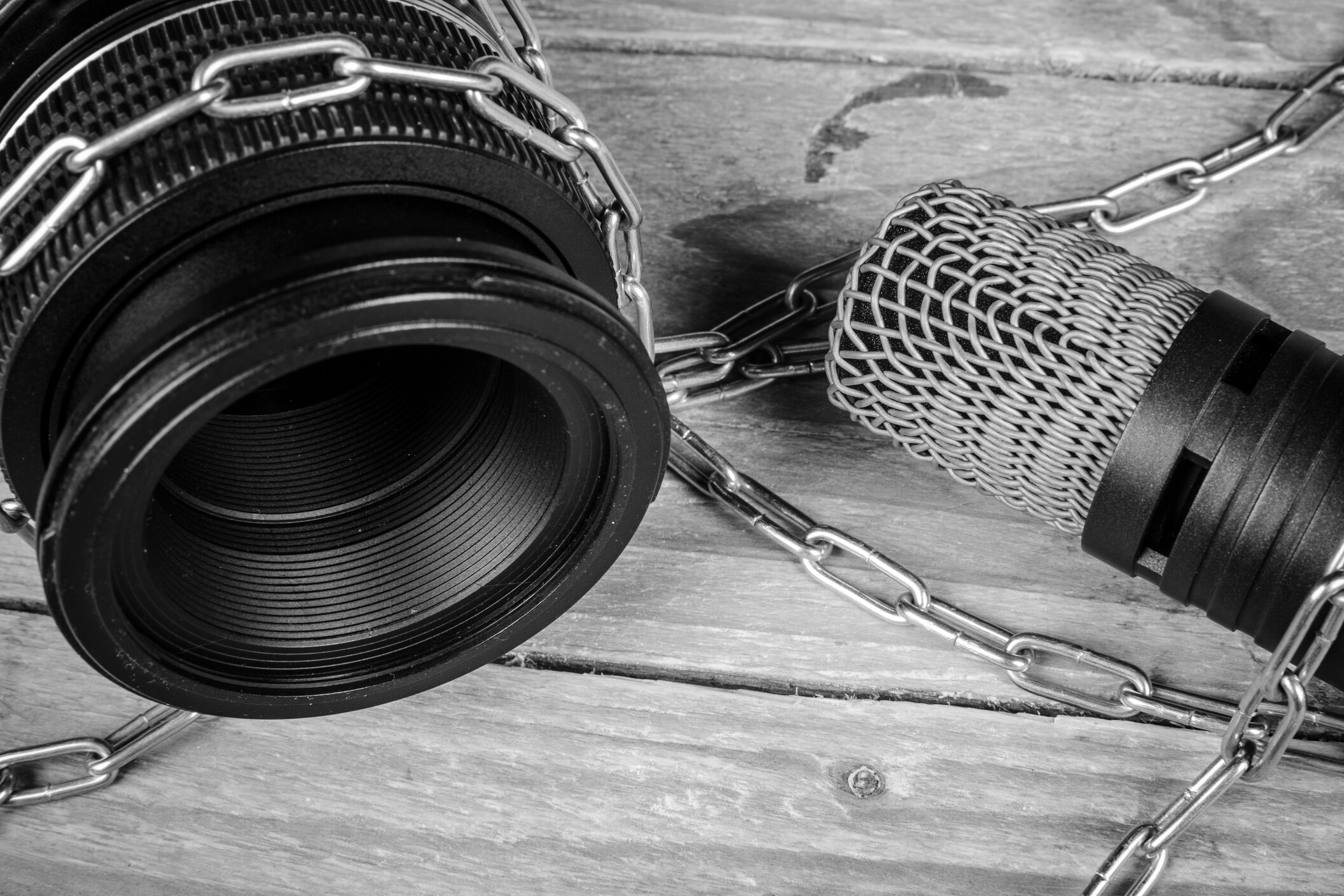Protesters chanting “fake news media”; the police being called in to support journalists: it has been a sobering start to the new year, and a reminder of the serious challenges facing public media across Europe.
Several hundred protesters gathered outside the Berlin studios of German public broadcaster ZDF earlier on this week. The gathering was part of a nationwide protest against Covid-19 restrictions. ZDF reported that 400 people turned out in Berlin, congregating outside the broadcaster’s capital city studio. As seen in video footage captured on 3 January by Julius Geier, a reporter for Tagesspiel, the protesters then started chanting “Lügenpresse” [fake news media] towards the ZDF studio.
In response to the protest, the German Association of Journalists (DJV) described the group as a “small minority of vaccination opponents, lateral thinkers, corona deniers, media haters and anti-democracy opponents.”
Das ZDF-Hauptstadtstudio wird durch eine Polizeikette bewacht, während die Menge aus Impfgegnern „Lügenpresse“ und „Ihr seid Schuld“ skandiert. #b0301 pic.twitter.com/irp22IIzE5
— julius geiler (@glr_berlin) January 3, 2022
It was noted that the protests nationwide were predominantly peaceful and that most of those attending wore masks as required. But the turn to chanting “Lügenpresse” directed at ZDF demonstrates the ongoing struggle public media face as a target for these groups. The pandemic has exacerbated existing divisions, sown further distrust of authority, and stimulated a proliferation of mis- and disinformation. Consequently, high-quality public media such as ZDF – a bastion of independent, rigorous, and scrutinising journalism – instead becomes perceived as complicit with authorities, and a conveyor of ‘fake news’.
The hostility shown towards journalists is an ongoing and unacceptable issue. Over the past few months, as many countries across Europe have re-imposed Covid-19 public health measures, or introduced vaccine mandates, there has been an increase in protest action, and with it, an added pressure onto public media. In Croatia, protesters against Covid-19 vaccination certificates marched to HRT’s headquarters, where they made a number of false and damaging accusations at the public broadcaster.
Read more: Threats to journalists on the rise across Europe
Vilifying journalists also presents an ongoing threat that such protests could end in violence, as it did in May 2020, when a ZDF crew were attacked while filming a protest. Journalist safety across Europe is now a pressing issue, which led to the Brussels Declaration last year.
The rise in hostility towards public media and journalists during the pandemic is clear. According to the Media Freedom Rapid Response (MFRR) group, there were 272 media freedom violations across Europe in the first half of 2021 alone. 56 of these were physical in nature, and 121 were verbal. 71 of the alerts received by the group were related to COVID-19, such as threats to reporters covering the crisis or protests.
Public media are not ignorant of the danger posed to high-profile journalists. According to The Times, the BBC has recently called in the Metropolitan Police to support their journalists. It is feared that particularly well-known journalists such as Newsnight Editor, Nicholas Watt, could be attacked by members of the public. These concerns have been especially heightened since the death of Conservative MP, Sir David Amess. And it has also been shared by the Irish public broadcaster, RTÉ, who have similarly turned to the gardai for support.
Any form of verbal, online, or physical attacks or threats towards public media must be called out, and the decline of journalist safety needs to be continuously monitored. As the pandemic continues to divide many, it is more important than ever for there to be quality sources of accurate news and information, but this requires robust mechanisms to ensure the safety and freedom of journalists to report.
Header Image: ZDF Symbol At The Capital Studio In Berlin. Credit: cries/istock
Related Posts
30th September 2021
Brussels Declaration: PMA joins public media and international organisations to call for journalist safety and media freedom
Today, public service media companies…
23rd September 2020
Call Out: COVID-19 compounds risks to public media and their critical role in democracy
Independent public media and public…
7th July 2020
COVID-19: Amplifying the threats to public media
From political interference to funding…



